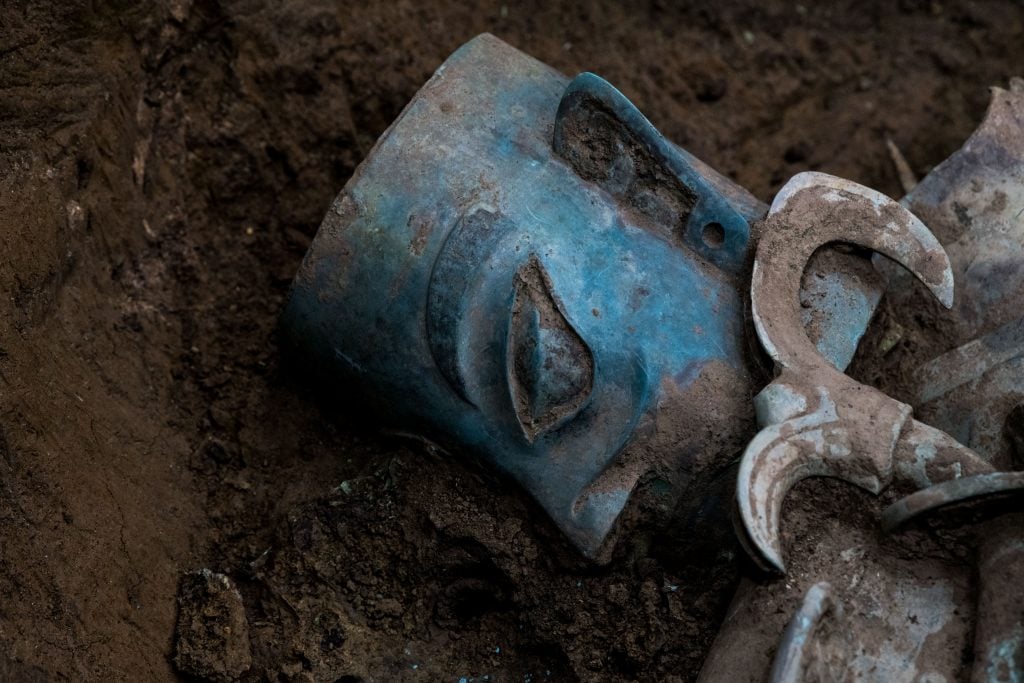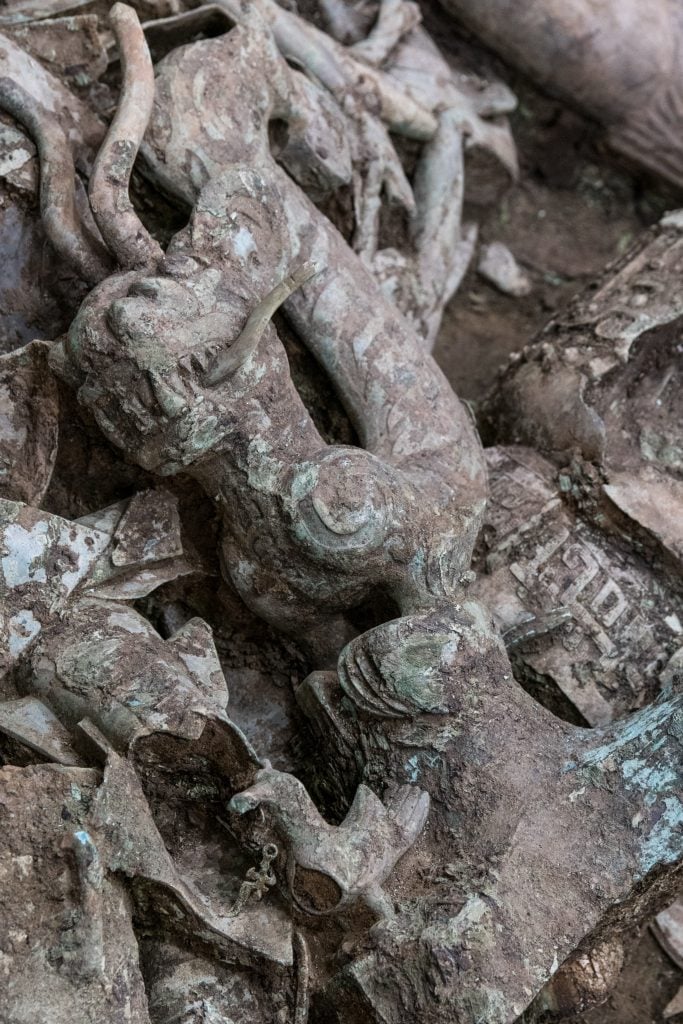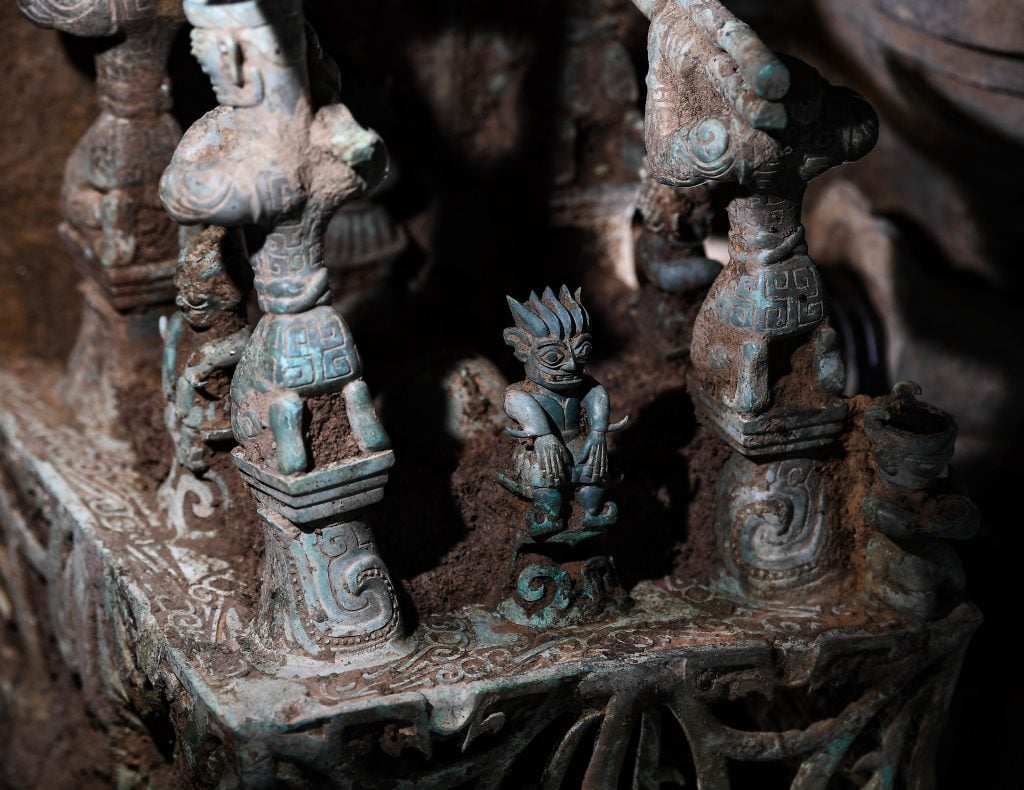Archaeology & History
Archaeologists Have Uncovered 13,000 Utterly Remarkable Shang Dynasty Relics in China, Many of Them Used in Sacrificial Rites
UNESCO is considering making Sanxingdui a world heritage site.

UNESCO is considering making Sanxingdui a world heritage site.

Amah-Rose Abrams

Archaeologists discovered 13,000 cultural relics during an excavation of the ancient site of Sanxingdui, near the city of Chengdu in China. The relics date from the Shang Dynasty (1600 B.C.E.-1046 B.C.E.) and are linked to sacrificial practices from the time. The discoveries at the ancient site are so remarkable that UNESCO has placed it on a “tentative list” to become one of their World Heritage Sites.
The items, unearthed between 2020 and 2022 were found in a series of eight small circular pits surrounded by trenches, as well as some smaller sacrificial pits. These pits contained the 13,000 relics, about 3,155 of which are relatively intact.
“More cultural relics unearthed at Sanxingdui have also been seen in other locales in China, giving evidence of the early exchange and integration of Chinese civilization,” said Ran Honglin, director of the Sanxingdui Cultural Relics and Archaeology Research Institute.

A dragon-shaped bronze item excavated from the No.8 sacrificial pit at Sanxingdui Ruins site in southwest China’s Sichuan Province. Photo by Tang Wenhao/Xinhua via Getty Images.
An extraordinary bronze and jade box shaped like a turtleshell has archaeologists puzzled as to its usage.
“It would not be an exaggeration to say that the vessel is one of a kind, given its distinctive shape, fine craftsmanship, and ingenious design,” Li Haichao, a professor at Sichuan University, told Xinhua. “Although we do not know what this vessel was used for, we can assume that ancient people treasured it.”

Bronze altar excavated from the No.8 sacrificial pit at Sanxingdui Ruins site in southwest China’s Sichuan Province. Photo by Wang Xi/Xinhua via Getty Images.
A three-foot bronze altar was also found in one of the pits, and is thought to be a sacrificial altar.
“The sculptures are very complex and imaginative, reflecting the fairy world imagined by people at that time, and they demonstrate the diversity and richness of Chinese civilization,” said Zhao Hao, an associate professor at Peking University.
The ruins at Sanxingdui were discovered in the 1920s and are known as one of the greatest archaeological finds of the 20th century, dating back as far as 4,500 years.